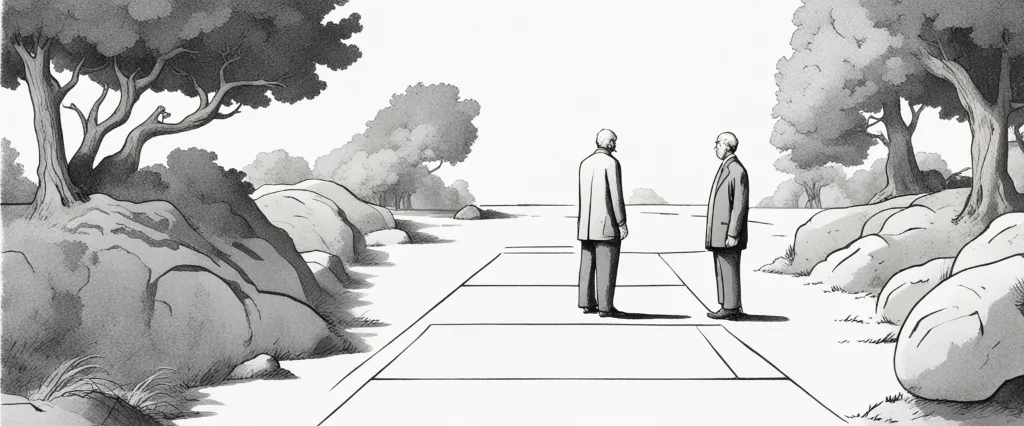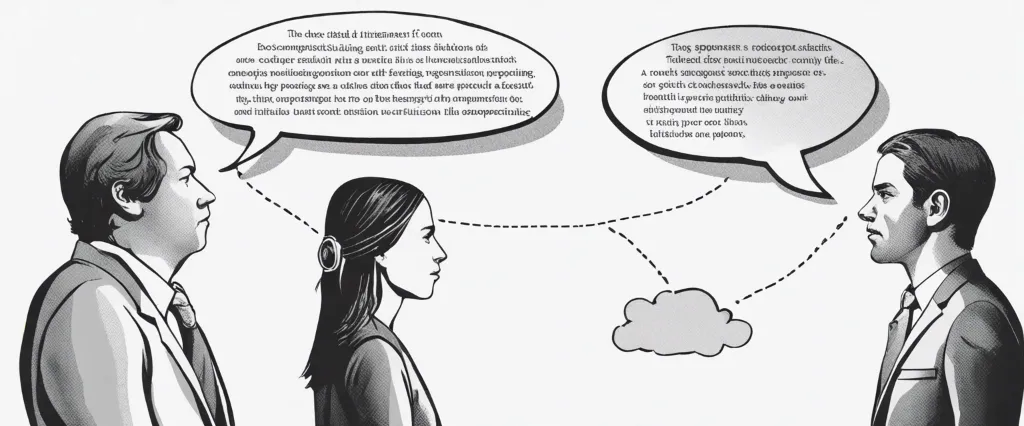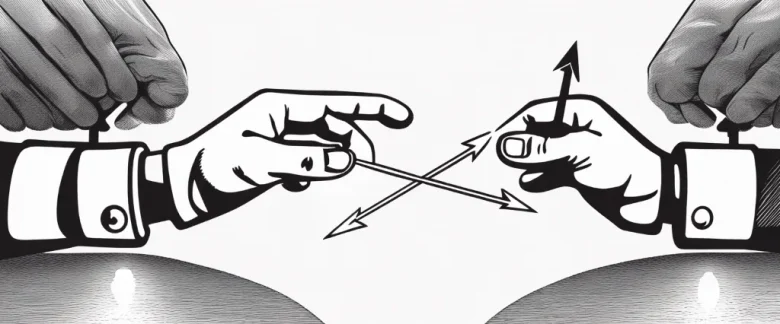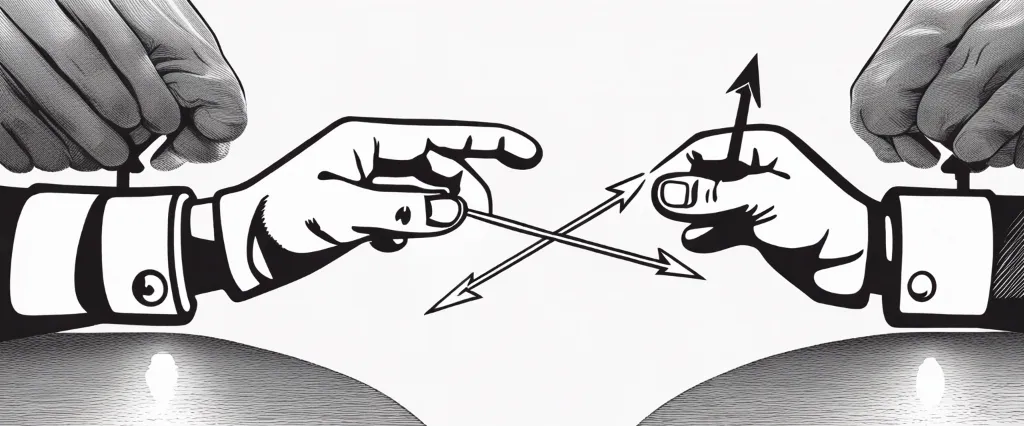In the captivating book “Decisive” co-authored by renowned author and speaker, Chip Heath, readers are taken on an enlightening journey to understand the psychology behind decision-making. Drawing from extensive research and real-world examples, Heath dives into the inherent biases that hinder our ability to make sound choices, and provides practical strategies to overcome them. With a passion for helping people navigate the complexities of decision-making, Chip Heath’s expertise and insights make “Decisive” an essential read for anyone seeking greater clarity, confidence, and success in their decision-making processes.
Chapter 1: The Four Villains of Decision Making
Narrow framing refers to the tendency to see only one option or course of action when making decisions, often neglecting other possibilities or failing to consider alternatives. It indicates a limited perspective, leading to suboptimal decisions. The authors emphasize the importance of widening our options and considering different perspectives to make more informed choices.
Confirmation bias refers to our inclination to favor information that supports our existing beliefs while dismissing or ignoring evidence that challenges them. This bias can lead to flawed decision-making, as it prevents us from adequately evaluating alternative viewpoints and considering all available information. Overcoming confirmation bias entails actively seeking out diverse perspectives and conflicting evidence to ensure a more balanced decision.
Short-term emotion highlights how our emotions can cloud our judgment and influence our decision-making process. Strong emotions, whether positive or negative, can cause impulsive and irrational choices. The authors suggest taking a step back and considering the long-term consequences to make more rational and logical decisions.
Lastly, overconfidence refers to the tendency to be overly confident in our judgment and forecasting abilities. This arrogance can lead to disregarding potential risks and uncertainties, resulting in poor choices. The authors stress the importance of embracing a humble and curious mindset, recognizing our limitations, and seeking input from others to avoid the trap of overconfidence.
In summary, readers are encouraged to approach decisions with a broader perspective, consider diverse viewpoints, manage emotions, and maintain humility, leading to better and more effective decision-making.
Chapter 2: Widening Your Options
The authors introduce the concept of a “narrow frame,” which occurs when we only consider a few alternatives rather than exploring a broader range of possibilities. Narrow framing often happens due to various reasons, such as being influenced by the first option we encounter or feeling overwhelmed by too many choices. To overcome this, the authors suggest widening our options by seeking out new perspectives, expanding our information sources, and considering unconventional alternatives.
The chapter highlights the importance of avoiding “whether-or” choices and instead embracing “both-and” thinking. By considering multiple options simultaneously, we can find creative solutions that harness the benefits of each alternative and minimize the drawbacks. The authors provide examples of individuals and organizations that have successfully employed the “both-and” approach, demonstrating how widening options can lead to unexpected but successful outcomes.
To help readers widen their options effectively, the authors provide three practical strategies. The first is to consider the opportunity cost, which involves weighing the potential gains and losses associated with each option. By comparing the opportunity costs, we can make more informed decisions. The second strategy is to use multi-track decision making, where we invest in exploring multiple alternatives simultaneously rather than committing to a single path too quickly. Lastly, the authors discuss the importance of finding a “devil’s advocate” or seeking diverse opinions to challenge our own perspectives, ensuring that we consider a wider range of possibilities.
In conclusion. By avoiding narrow framing, considering both-and thinking, and employing practical strategies, individuals can enhance their decision-making abilities and increase their chances of finding successful solutions.
Chapter 3: Reality-Testing Your Assumptions
The authors start by highlighting the tendency for humans to fall victim to three common mistakes when it comes to assumptions: confirmation bias, overconfidence, and short-term emotion. They explain how these biases can cloud our judgment and prevent us from gathering all the relevant information needed for making informed decisions.
To counter these biases, the book suggests several practical techniques. One such technique is to consider the opposite of your assumption – the “ooch” technique. By looking for evidence that disproves your assumption, you can gain a more balanced perspective. Additionally, the authors introduce the “zoom-in, zoom-out” technique, which involves shifting your focus to different timeframes to see the potential long-term consequences of your decision.
Another core idea discussed in this chapter is the importance of seeking out divergent viewpoints. The authors provide examples of how organizations like Intel encourage dissenting opinions and create safe spaces for employees to share their perspectives. They argue that by actively seeking different viewpoints, we can better challenge our assumptions and make more robust decisions.
The chapter also emphasizes the value of conducting experiments and gathering real-world data to back up our assumptions. The authors suggest small-scale experiments or simulations to test our ideas, and to always remain open-minded to the results, even if they go against our initial assumptions.
Chapter 4: Attaining Distance Before Deciding

The chapter begins with the concept of the “10/10/10” framework, which suggests considering how we might feel about a decision in ten minutes, ten months, and ten years. This technique helps to overcome short-term biases and immediate emotions that can cloud judgment and prevent long-term thinking.
The authors then introduce three strategies for attaining distance. The first strategy is to zoom in and out, encouraging individuals to shift their perspective. By zooming in, individuals can focus on the specific details and nuances of a situation, while zooming out allows them to see the broader context and potential consequences.
The second strategy is to personify the decision. By imagining what advice one would give a friend in the same situation, individuals can detach themselves emotionally and gain an objective viewpoint. This technique helps counteract self-interest and personal biases that may affect decision-making.
The third strategy is to weigh the short-term and long-term consequences. Often, individuals prioritize immediate gratification over long-term goals, leading to regret later on. By considering the long-term consequences of a decision, people are more likely to make choices aligned with their values and aspirations.
Additionally, the chapter highlights the importance of learning from others’ experiences and engaging with diverse perspectives to make better decisions. The authors suggest seeking advice from mentors or conducting “pre-mortems,” where individuals envision a decision failing and identify potential pitfalls.
By employing techniques such as zooming in and out, personifying decisions, weighing short-term and long-term consequences, and seeking diverse perspectives, individuals can make more informed choices and avoid common decision-making pitfalls.
Chapter 5: Preparing for the Worst
It emphasizes the value of thinking critically about worst-case scenarios and preparing for them in order to make better and more informed choices.
The chapter begins by outlining the problem of optimism bias, which is the tendency to believe that things will go well and to disregard potential risks and negative outcomes. To combat this bias, the authors introduce a decision-making process called the “premortem.” The premortem involves imagining that a project or decision has already failed and then identifying the possible reasons for that failure. By doing so, teams or individuals are able to identify potential pitfalls and shortcomings that they may not have considered initially.
The premortem technique is further discussed through real-life examples and research findings, demonstrating its effectiveness in improving decision-making. It helps in avoiding blind spots, encouraging open and honest discussions, and encouraging individuals to think critically about potential risks. The authors also emphasize the importance of involving multiple perspectives and diverse voices during the premortem process to gain a broader understanding of potential failure points.
Additionally, the chapter highlights the significance of finding the right balance between excessive pessimism and unrealistic optimism. It suggests using a “Tripwires and Safety Nets” approach to prepare for worst-case scenarios by setting triggers or indicators (tripwires) that prompt a reassessment of the decision, and establishing contingency plans or safety nets to mitigate potential risks.
Chapter 6: Finding Someone Who Has Solved Your Problem
The chapter begins by highlighting the common tendency of individuals to rely solely on their own knowledge and experiences when making decisions, overlooking the valuable insights and expertise of others.
To illustrate the importance of seeking guidance, the authors share the story of entrepreneur Sharon Vosmek, who faced a critical decision regarding the future of her company. Instead of relying on her own limited perspective, she actively sought mentors who had previously encountered similar situations. By doing so, Sharon gained access to a wealth of valuable advice and different viewpoints, allowing her to make a more informed and effective decision.
The chapter introduces the concept of “finding your own scout” – identifying individuals who have faced similar problems and can offer valuable guidance. It emphasizes the benefits of outsourcing the exploration of potential solutions to those who have already solved them, rather than relying solely on one’s own analysis. This approach broadens the decision-maker’s perspective, introduces alternative ideas, and helps to avoid biases and blind spots.
The authors suggest various methods to find scouts, including reaching out to experts, leveraging personal networks, and conducting online research. They also emphasize the importance of seeking diverse perspectives to ensure a range of viewpoints and insights.
Furthermore, the chapter emphasizes the importance of asking the right questions when seeking advice. It provides a framework called “talk to your lion” that guides individuals in asking strategic questions to maximize the value of the conversation.
Chapter 7: Considering Your Future Self
The chapter emphasizes the importance of taking into account the long-term consequences of our decisions and overcoming the biases that prevent us from doing so.
The chapter begins by illustrating the difference between two versions of ourselves: our present self, who experiences the immediate pleasure and pain, and our future self, who reaps the consequences of our decisions over time. Heath uses research and real-life examples to demonstrate that decisions made in the present often prioritize short-term gain over long-term benefits, reflecting our immediate desires rather than considering the impact on our future selves.
To counteract this bias, the author presents various strategies and techniques. One approach is to imagine our future self vividly, allowing us to connect emotionally with the person we will become. By strengthening this connection, we are more likely to make decisions that benefit our future selves, such as saving money or investing in our health.
Heath also introduces the concept of a “Ulysses contract,” named after Greek mythology, where individuals make decisions in advance to prevent future temptations. This strategy involves making a commitment to follow through on a particular course of action, such as having a portion of our income automatically deducted for savings or enrolling in a fitness class.
The chapter concludes with a discussion of how social forces play a role in our decision-making. For example, the author explores how surrounding ourselves with individuals who share long-term goals can positively influence our choices.
By understanding the biases that hinder such considerations, and employing strategies like emotional connection, Ulysses contracts, and positive social influence, we can make decisions that benefit us in the long run rather than being solely guided by short-term desires.

Chapter 8: Shaping Your Environment
The chapter begins with a story about a nurse named Amy who developed a checklist to reduce bloodstream infections in her hospital. This example highlights the power of shaping the environment to improve decision-making.
The chapter introduces two main strategies for shaping your environment: 1) shaping the path and 2) tweaking the physical surroundings. Shaping the path involves proactively making decisions in advance by creating rules, processes, or checklists. These can provide a structure that guides decision-making and helps avoid potential biases or distractions. It emphasizes the importance of setting clear criteria for making decisions and sticking to them.
Tweaking the physical surroundings involves making changes to the physical environment to facilitate better decision-making. For example, removing distractions, organizing information in a visually appealing way, or creating an environment conducive to collaboration and feedback. Research suggests that physical environments can significantly impact decision-making, so making intentional changes can help us make better choices.
The chapter also discusses the idea of self-binding, which involves making commitments that restrict future choices. By committing ourselves in advance to certain actions or decisions, we can limit our options and prevent impulsive or irrational decision-making. This concept is particularly useful when faced with temptations or difficult choices.
After Reading
In conclusion, “Decisive” by Chip Heath is a highly practical and insightful guide to making better decisions in both personal and professional life. By offering a four-step process, the book encourages readers to widen their options, reality-test their assumptions, attain distance before deciding, and prepare for “oopsy” moments. Through numerous real-world examples and compelling stories, Heath emphasizes the importance of considering a multitude of possibilities, resisting narrow framing, seeking outside perspectives, and learning from past mistakes. By implementing the strategies and tools provided in this book, individuals can become more confident decision-makers, equipped to navigate complex situations and achieve better outcomes. Overall, “Decisive” is a valuable resource for anyone seeking to improve their decision-making abilities and enhance the quality of their choices.
1. Emotional Intelligence” by Daniel Goleman – Following his groundbreaking work on social intelligence, Daniel Goleman explores the importance of emotional intelligence in this enlightening book. Learn how to harness your emotions to build stronger relationships, enhance self-awareness, and make better decisions.
2. Getting to Yes: Negotiating Agreement Without Giving In” by Roger Fisher and William Ury – Building on the concepts of social intelligence, this classic book provides practical strategies for effective negotiation. Discover how to communicate assertively, create win-win solutions, and strengthen relationships through principled negotiation.
3. The Power of Habit: Why We Do What We Do in Life and Business” by Charles Duhigg – Drawing from psychological research, Charles Duhigg examines the science behind how habits shape our lives and offers tools to break undesirable patterns. Understand the power of routines, habits, and how to take control of your own behavior.
4. Influence: The Psychology of Persuasion” by Robert Cialdini – Explore the principles of persuasion and how they operate in our daily lives. Robert Cialdini reveals the psychological triggers that make people say “yes” and offers practical tips to become more influential in your personal and professional relationships.
5. Thinking, Fast and Slow” by Daniel Kahneman – Recommended as a logical progression from “The Undoing Project,” Daniel Kahneman presents his groundbreaking research on cognitive biases and the mechanics of human decision-making. Uncover the dual system of thinking and learn how to make more rational and informed choices.
Note: Although “Never Eat Alone” by Keith Ferrazzi is an excellent book on building professional relationships and networking, I have excluded it from this recommendation since you have already mentioned it.




